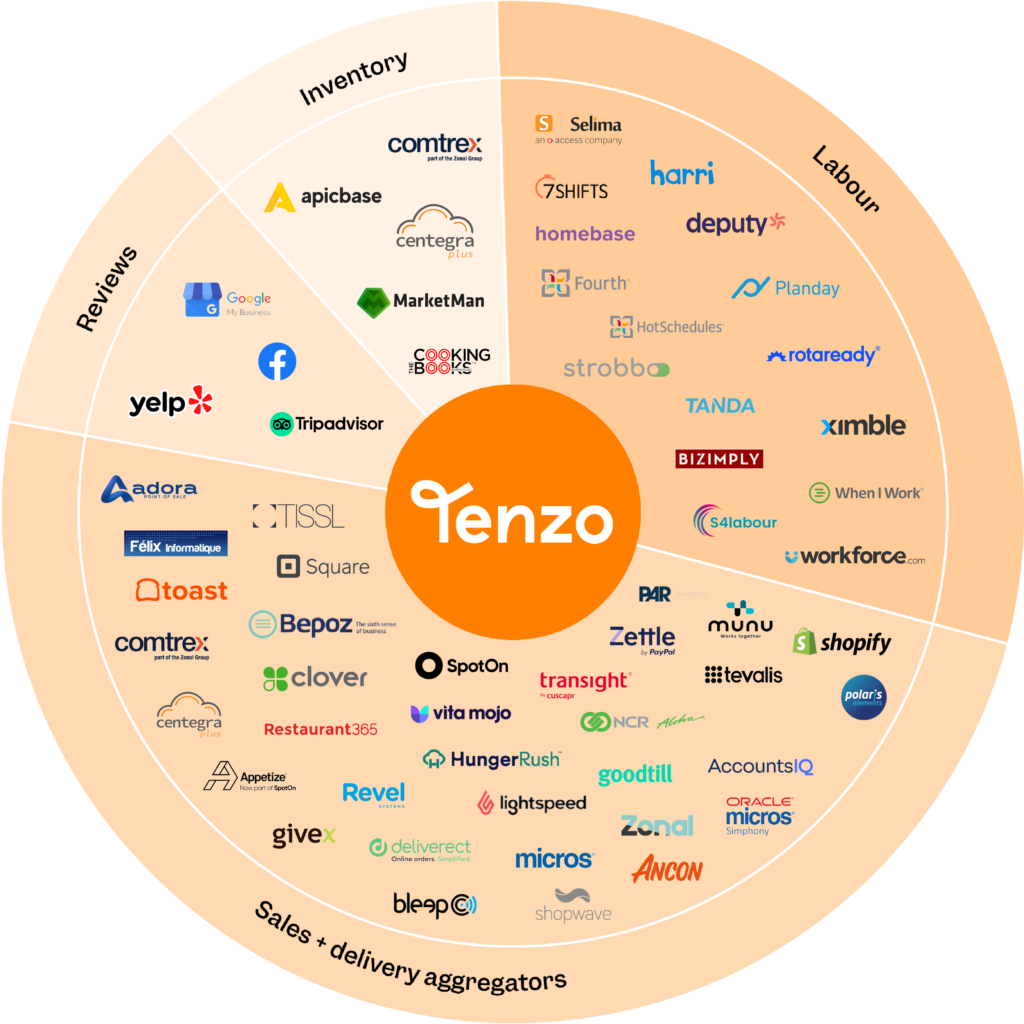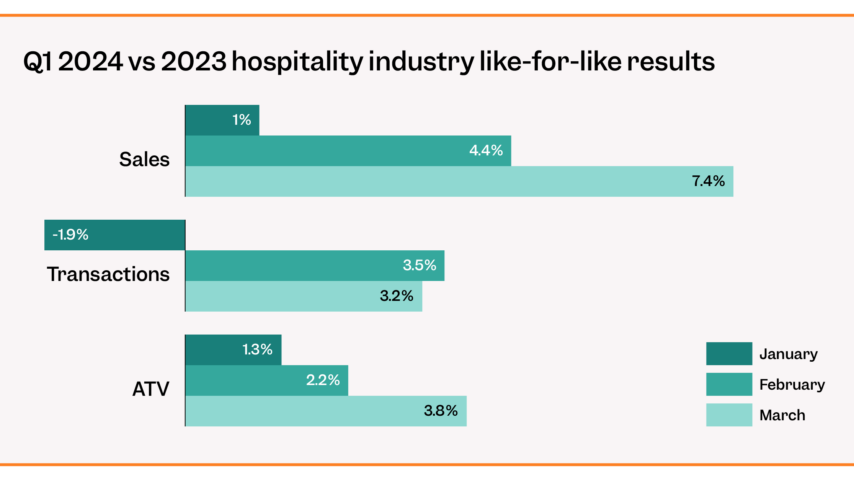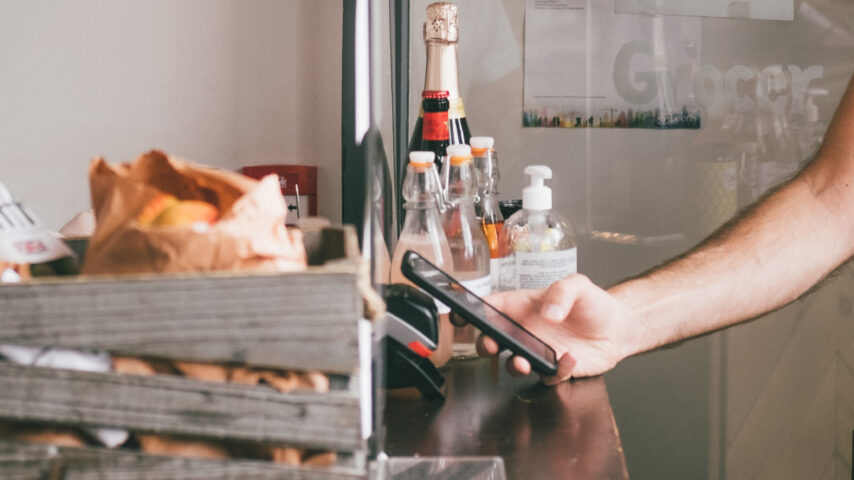In this article
Automation, and technology as a whole, has not always been readily accepted in the restaurant industry. The reason for this is pretty clear, successful restaurateurs have long relied on their own intuition to make decisions, a method that has worked well in the past. However, technological tools can build on this intuition making for much faster decision-making. In turn, automating these processes frees up brain space and, most importantly, time that restaurateurs can use to focus on actually running their restaurants.
The term automation might bring up thoughts of robots and human-free environments, but those ideas belong in the world of science-fiction, not in restaurants. Automating your processes is simply a way of making everyone in the business more efficient; tools that enable you and your staff to do their jobs better. Plus, the reality is you most likely already have the systems you need to automate in place, meaning no need for huge infrastructure overhauls. Additionally, now that reopening in the UK is just days away, automating these processes will allow you to make essential business decisions quickly as we learn more about demand in a post-Covid world.

Just a few examples of the systems we integrate with. Our full list of integrations can be found here.
Sales
POS
The last three months have seen a fundamental shift in the way that people consume food. Delivery has obviously been a growing trend throughout the last few years, but pre-Covid, restaurants could still heavily rely on dine-in customers if delivery wasn’t something they wanted to look into. This is no longer the case. Consumers now rely on multiple different channels to get their food, whether it’s delivery from a delivery marketplace (e.g. Deliveroo), delivery from a restaurant’s own app, click and collect, or orders from an online store. With so many different channels, keeping track of sales manually can be a total nightmare with an abundance of iPads, not to mention that one wrong entry can throw off your data for a whole day.
This is where using programmes that integrate with your POS is life saving. Firstly, setting yourself up with an online ordering aggregator that funnels all delivery orders automatically into your POS will relieve a lot of that stress. Companies like Itsacheckmate and Deliverect will take your orders from Deliveroo, Just Eat, UberEats, etc and put them all in one place so you can easily track which marketplace is sending you the most orders and seeing where the highest spends some from. However, likelihood is that you also want a company-branded web page or app that allows you to circumvent the huge fees these delivery platforms charge. Slerp, Loke and Flipdish are the answer here and a big plus is that they also integrate with POSs.
As restaurants start to reopen you might also be considering new ways of taking orders to limit human contact. That could be through using a mobile ordering platform like Wi-5 that allows customers to peruse the menu and order directly from their mobile phones, limiting the need for communal menus and enabling social distancing between customers and waiters and also sends the order straight to your point of sale. We’ve also seen an increase in kiosks that allow for contact-free ordering. In quick service, kiosks may actually be the ultimate answer: no need for contact, easily disinfected, and studies show that people spend more on average at kiosks because there’s less embarrassment than when ordering from a person.
Another big trend we’ve seen come out of the lockdown period is sending out DIY kits and branded items from an online store. As this is also revenue for your restaurant it would make sense to see it as part of your overall sales data, so that you’re able to analyse and compare it. Using a programme such as Shopify will make these online transactions easy and simple for both you and your customers so all you need to worry about is producing the goods.
Accountancy
Gone are the days of manually inputting your sales into accounting software. You can automate your Point of Sale accounting using platforms such as SHOGO. This means that your sales get inputted into your accounting system (eg Xero) daily. You can map the data from your POS into Xero so that it is a fully automated process, removing the need for manual data entry.
A common name you’ll see throughout this blog will be Zapier. What Zapier allows you to do is to push any data from one of its integrated apps to any of the other (over a thousand) integration partners. In terms of accounting, this could mean sending all the data in a reporting platform that aggregates all your sales (e.g. Tenzo) into any of the accounting apps it has in its arsenal, allowing you to choose whichever system works best for you.
Labour
When it comes to staff, schedules can often be based on whatever they were the previous week. What this inevitably leads to is under- or overstaffing due to changing circumstances week to week. What schedules should really be based off is your predicted sales for any given day. Tenzo uses AI to forecast your sales up to three weeks in advance and then uses this information to create the optimum staff schedule. This reduces employee stress as they are never run off their feet from an unexpected rush and management are happy as the cost of labour never exceeds acceptable levels.
Once you have this automated schedule, you can use Zapier to push it through to any of its labour planner apps including Deputy, WhenIWork and Tanda. This means everything is in one place, no switching between apps to make sure you’ve got the right amount of hours scheduled and you know that your schedule is based on cold hard data.
Automation in the staff scheduler world can actually go as far as auto-scheduling individual staff members. Planday has this very option. This is an amazing tool if you know that your staff all work well together, but just remember that human intuition isn’t something that can be replicated by computers so it’s always worth having a quick look over your schedules if you know that certain team members work best together to make sure they’re scheduled at the same time.
And don’t forget to take advantage of the integrations your staff scheduler may have. The likelihood is that they integrate with your payroll provider – see Deputy’s integrations here – meaning that shifts and hours worked automatically get sent to your payroll system to make payday a far easier and less manually demanding experience.
Inventory
Managing your inventory is something I’m sure many restaurateurs wished was a lot faster, and while there are no real ways to cut corners when it comes to stock takes and the like, there are ways to speed up certain processes. One such way is Marketman’s genius Snap Expense Tracking. Instead of manually inputting all items and prices into the platform, simply take a picture of your invoice on your smartphone and it will automatically be uploaded, taking out a lot of the grunt work.
Another way of making your inventory management more efficient is by optimising what you buy in the first place reducing waste and the cost of uneaten food. This can be done using dynamic par levels for ordering as opposed to static ones. Static par ordering is when ordering is done to make up a fixed number of items, this would mean that you decide to always have, say, 60 chickens on hand and you reorder each week based on how many you need to make up that number. Dynamic par levels, on the other hand, take future demand into account. If you can forecast your sales at an item-level, you know that while last week you needed 60 chickens, this week you only need 20 because the demand will be different based on other factors such as weather or specific events. This means that you’ll always have the right amount in stock and reduce your waste.
If you can forecast at an item-level, you should also be able to forecast at hourly, half-hourly or even quarter-hourly intervals. This means that you know what to cook and when. Taking the chicken example further, it could tell you how many to put on the grill at 11am, 11:30 or at noon. Even having an idea of demand for the day as a whole can be hugely beneficial when it comes to prepping the right amount of food to get you through service, but not over-prepping so you don’t end up throwing away what you haven’t sold. Being able to send all of this information to the kitchen on a tablet can be the difference between a stressed kitchen and one that operates smoothly with everyone knowing what’s going on.
Finance
The great divide between restaurant finance teams and restaurant operations teams seems to be Excel. In short, the finance teams love it, the ops teams hate it. The question is how to bridge the two. Using a platform like Tenzo satisfies both. We make it easy for ops teams to see the data and reports that they want without needing to do any manual Excel work. Finance teams can always download CSVs of reports that they want to do further comparison on, but they don’t have to.
Tenzo sends automated flash P&Ls on a monthly or weekly basis. Because we connect your POS, labour scheduler and inventory tool, we can send you the gross profit numbers easily and regularly without the manual work that using different systems used to require. Using Tenzo also allows you to have personalised reports sent straight to you, to give you a 360 degree view of your business. We can send you these P&Ls based on brand (if you’re running multiple brands), area, or location based on role and responsibility.
Amazingly, yearly budgeting can also be automated. Using AI forecasting algorithms, we can take the total revenue a restaurant is hoping to make for the year and break it down by day based on past performance to have a realistic idea of the amount they need to take in to hit that target. This helps take out a lot of the guesswork that traditional budgeting methods have necessitated and gives a reasonable goal to work towards.
Conclusion
Automation clearly saves you time and allows you to use that time improving your business. It also saves you money. While all these solutions do have a cost, the likelihood is that you already have a lot of the infrastructure already in place, and though this is an exhaustive list of all the things you can do, simply implementing a few of these ideas can save you money in the long run. When you’ve got reliable data coming through, you can make faster and more informed decisions for your business which stops you overspending on things that don’t work.
It’s also important to remember that automation doesn’t mean the end of a people-based industry. Hospitality will always have a need for warm and inviting people by its very definition. Automating some of these practices will only mean that the people at the centre of the industry will have more time to do what they do best.
If you’d like to discuss anything mentioned in this blog in more detail, please feel free to email [email protected], we’re always happy to discuss your tech stack whether it currently involves Tenzo or not.





